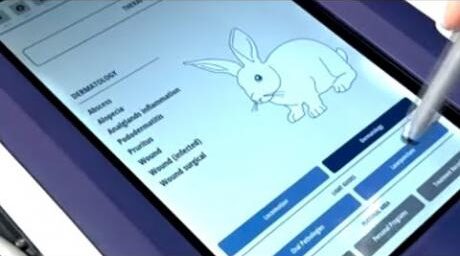Written by: Rossin A.
DVM Veterinary Clinic, Verona, Italy

In recent years, the use of laser therapy has had a significant expansion in the veterinary field. Laser therapy, having achieved remarkable results in the field of human health, has also been applied to the veterinary field with equal success and its use is extending to all domestic species and even exotic animals.
The situation is constantly changing, since in addition to the application of laser therapy in different therapeutic areas, it was necessary to evaluate the differences among the species in order to optimize treatment protocols.
The passage from the human to the veterinary physiotherapy was the first step towards an increasing amount of applications: arthritis, neurology, dermatology and the most diverse fields of application, of course in different species, as clearly demonstrated by the case reports described by many colleagues who use almost daily laser therapy.
MLS Laser therapy has proven its effectiveness in different situations: the synergistic effect of the two wavelengths has proven a very valuable asset in counteract diseases characterized by inflammation and pain, promoting tissue repair and homeostasis. Thanks to these characteristics MLS Laer Therapy may be applied to manage many different diseases.
The laser-tissue interaction can induce photochemical, photothermal and photomechanical effects.

It has been demonstrated by many studies that these effects can interfere with molecular and cellular mechanisms, thus affecting biological processes such as inflammation and pain transmission, improving the symptomatology and accelerating healing.
After two/three applications, a very high percentage of patients treated for joint diseases significantly improved, as demonstrated by clinical cases found at asaveterinary.com.
Moreover, in dermatology, the effect of tissue repair and regeneration, that the literature attributed, at least in part, to the laser-induced increase in ATP synthesis, in many cases shortens 30% – 40% the time required for wound healing by second intention. (Read our blog post on wound healing)
An interesting case report has shown promising results by applying the laser therapy to help fracture repair: improvement in the formation of bone callus, reduction of pain and inflammation have been observed, with consequent reduction in the recovery time.
In the field of neurology, the conservative treatment of hernia/disc protrusion has shown a marked improvement in the patient, with reduced symptoms after 3-4 applications.
Even in the field of equine excellent results have been obtained: in addition to “classical” cases with inflammatory lesions in the distal part of the limbs, it has been observed that in pathologies related to tendon injuries, there is a strong stimulation of new functional tissue formation, without abnormal scarring, which can then give rise to adherences and functional reduction of the affected part.
Furthermore, specialists in various fields and cooperating with ASA are studying protocols for exotic animals, mammals, reptiles and birds, protocols for dermatology and increasingly specific therapeutic protocols for the treatment of stomatitis / gingivitis in cats.
The development of clinical protocols is the result of collaboration between specialists in different disciplines, ASA Research Division and the Joint Laboratory with the Department of Experimental and Clinical Biomedical Sciences, University of Florence, and includes the study, both in vitro and in vivo, of action mechanisms that are the basis of therapeutic effects and clinical validation of the treatment effectiveness.



